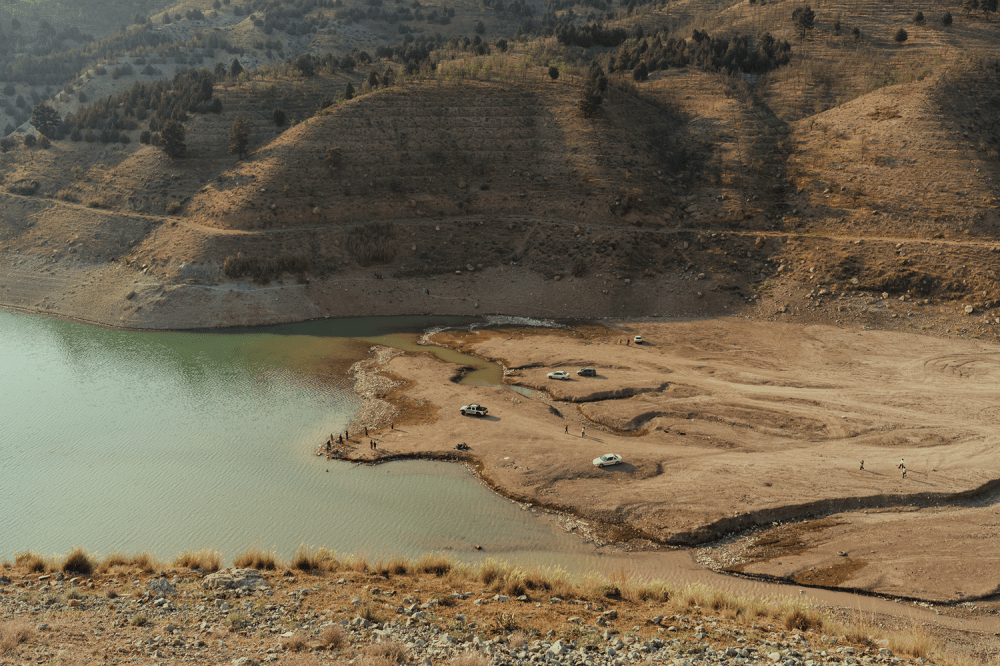Copyright Foreign Policy

In recent days, prolonged water cuts across Tehran have created widespread panic among the Iranian capital’s 10 million residents. Last week, after years of drought and reduced rainfall and snowfall, Iranian President Masoud Pezeshkian warned that Tehran’s residents would have to ration water—and eventually evacuate the capital—if there was no rain by late November. They’ve had years of warning, but Iran’s rulers have done nothing to resolve an increasingly existential water crisis. A few experts have been warning about the impending doom for decades. Most Tehranis, insulated from the hardships long faced by poorer, peripheral provinces, are only now feeling what other Iranians have endured for years. Iran has blown past ecological limits and punished natural water systems. The city of Tehran has eaten up far more than its share of water while water policy kept chasing supply rather than protecting sources such as aquifers. After very poor rainfall for the past two years, the government rushed a tunnel-and-canal diversion from the Taleqan Dam reservoir to soothe public fears. But Taleqan cannot meet all of Tehran’s demands. Interbasin transfers don’t solve scarcity; they export Tehran’s problems and have become a case study in environmental injustice toward rural and urban Iranians. Instead of building advanced wastewater plants to produce high-quality water for aquifer injection, authorities prioritized dams and transfers for the capital and large agricultural schemes. Most of Tehran’s water does not come from dams: Officials say more than 60 percent is pumped from groundwater. But the public largely believes otherwise, and for Tehranis, the fuller the dams, the calmer the mood. Right now, however, diminished rain and snow have left reservoirs low, adding to the sense of panic. The deeper failure is on the city’s surface. Tehran sprawled over the Alborz foothill alluvial fans—broad, gravel-and-sand cones that slow floods and percolate water into the aquifer—and then sealed them with asphalt and concrete. Rain, runoff, and snowmelt no longer infiltrate the ground to recharge Tehran’s aquifers. Other cities with similar rainfall shortages have found solutions: Recharge basins in Fresno, California, route water back underground. Cape Town, South Africa, built basins to capture episodic floodwater after its 2018 Day Zero scare. But Tehran did the opposite—sealed the alluvial fans in asphalt and concrete, flushed stormwater away as “waste,” and never sustained a real managed aquifer recharge program. Complacency is lethal. Iranian leaders, Tehran’s water authorities, and most of its residents did not realize the devastating extent of the crisis as long as the taps flowed. That illusion holds only where privately owned resources can hide it. Rooftop tanks in wealthier high-rises cushion outages and hide the real scale of the problem. Those high-rise blocks depend on groundwater supplies, like the rest of the city, but overpumping compacts the alluvium beneath them. As a result, cracks in the buildings have begun to show. The city sits on multiple fault lines, and when the major earthquake long anticipated by geophysicists arrives, buildings weakened by the sinking ground could fail, with casualties potentially in the hundreds of thousands. Another risk is urban fragility: As wells dried and farms collapsed, millions of people moved to the edges of Tehran—slums packed with former farmers pushed off the land by aquifer overdraft and economic policies that emphasized self-sufficiency while Iran was crushed under sanctions. Water shortages have hit those on the fringes the hardest. Tehran’s outlying areas get even less water, and outages turn quickly into public health emergencies such as the outbreak of disease. The regime is likely to face unrest in the capital’s outlying areas, with millions of frustrated and anxious Iranians marching into the streets again to demand a real response from the feckless regime. Which raises the obvious question about the evacuation talk: The Tehran metropolitan area does not have enough water to sustain life for its 14 million people. Where could they possibly go? What province, let alone country, could absorb them? Pezeshkian’s claim is completely absurd. There are practical steps that a more responsible and less corrupt government could take that would buy time and reduce risk. Level with the public: Publish rationing schedules, and fix immediate crises first. According to insiders speaking off the record, roughly 35 percent of Tehran’s water disappears through leaky pipes. This is an immediate issue that can be addressed relatively easily. The government must guarantee safe drinking water and sanitation for the outlying areas so the most vulnerable are protected first, not last. Authorities must also direct households to cut daily use and reuse graywater—the relatively clean wastewater from showers, bathtubs, bathroom sinks, and washing machines. In a parallel effort, the government must increase the reuse of water by investing in tertiary treatment, building injection wells and riverbed recharge basins, and pushing the reuse of water toward 70 percent. (It is now at approximately 20-25 percent.) In addition, it must make the recharge of aquifers a top priority, expand permeable surfaces wherever possible, and enforce the law against chronic overpumping. Households should also install rainwater catchment systems—rooftop or courtyard gutters, cisterns, first-flush units, and basic filtration—for nonpotable uses, which are cheap, fast, and scalable. People and decision-makers must act before next summer: Too much of Tehran’s drinking water feeds evaporative coolers and cooling towers. That is how you stop the bleeding, stabilize the system, and begin to rebuild a sliver of public trust. Of course, some figures are talking about transferring desalinated water to Tehran from the Sea of Oman—without grasping the environmental and financial burden of the technology or its true cost. Hot, salty brine degrades coastal ecosystems, while the high, largely fossil-fueled power demand gives each cubic meter a heavy carbon footprint. But the harder truth sits upstream of the pipes. Real solutions will not come from a water governance system dominated by the Revolutionary Guards and the water mafia. Iran needs a new system for water governance now. Otherwise, Tehran will turn into ruin, and millions of Iranians will head to more secure and sustainable lands.



